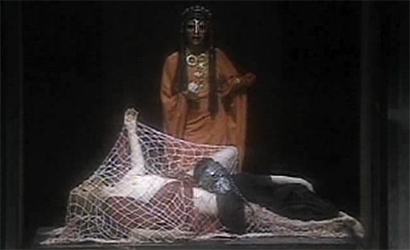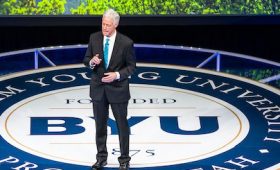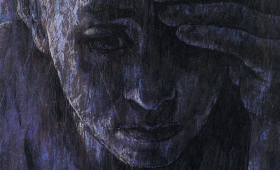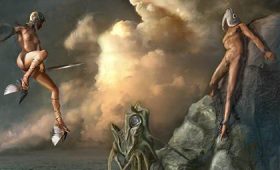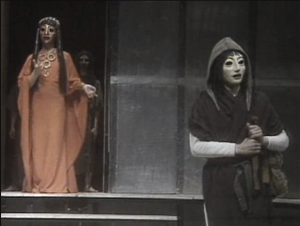
Students of Aeschylus’ Oresteia at Brigham Young University once again have cost-free access to a landmark production of the trilogy. Working through the lib.byu.edu/databases with BYU authentication credentials, student can view all three plays of this powerful tragic sequence in their entirety. Even if the video’s resolution falls well short of today’s hi-def and Tony Harrison’s idiosyncratic English translation (think “heavy on the kenning”), the 1981 British National Theatre production is memorable and lasting in all the right ways.
Robert Fagles profoundly observed that the two great monuments surviving from Athens’ floruit are 1) the Parthenon and 2) the Oresteia, BUT that the latter is better preserved than its marble counterpart. Ironically, a play that was subject to greater ephemerality has outlasted an edifice of glorious stone. The Oresteia deserves to be known and appreciated far beyond the confines of departments of Classical Studies.
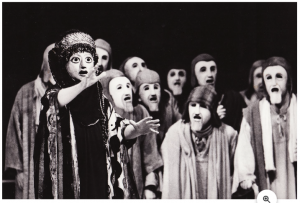
Peter Hall’s three-part film is an analogue performance he directed of the full trilogy — Agamemnon, Choephori, Furies [actually titled on the box “Eumenides (The Furies)” but on the video production itself only “Furies”] — which clocks in at a little under four hours total. The recording took place before a live audience in the Olivier Theatre, beneath electric lighting and with a powerful expressionist score by Harrison Birtwistle. Other than these modern trappings, the production is very Athenian — simple skene with one doorway, a round orchestra extending into the audience’s space as the Olivier’s design invites, all-male troupe, masks (even if some of the costuming strikes one as late-1980’s over-the-topness more than an attempt to get back to Athens circa 458 BC). Encountered through the lens of theatre-historical retrospection, Tony Harrison’s translation make some sense, feeling very proto-modern in its rhetorical timbre with heavy intonation on the kennings, e.g. “god-stone”, “he-god”, “blood-grudge”, and so on and so forth. Pip Donaghy utterly rocks the role of Clytemnestra. This all amounts to an overwhelming otherness in this production. Nobody who stumbles, while looking for re-runs of Friends or Arrested Development, into the middle of this production will think they are on familiar turf. ON the other hand, if the masked Agamemon’s basso profondo voice comforts you inexplicably, think Jim Carter (Mr Carson from Downton Abbey).
AlexanderStreet.com has a streaming channel called “Theatre-in-Video”. And for decades, literally, they have offered this production of Oresteia within the subscription paid for at BYU’s Lee Library. When I went looking for the trilogy recently so that I could share scenes with my students in ClCv 241, I found only links to brief (30-seconds per play!) samples. Fortunately, our Theatre and Music library Myrna Layton was able to pull the right strings almost immediately and allow the BYU community to view and study the important work.
VIEW IT (after log-in at http://lib.byu.edu) at video.alexanderstreet.com/channel/theatre-in-video .
Type “Oresteia” into the search bar.
OrestesANCIENT_AeschylusHall
Aeschylus, Oresteia analogue recording of a stage-plays Agamemnon, Choephori, and Eumenides, National Theatre of Great Britain production; directed and produced by Peter Hall ; English version, Tony Harrison.Publication info:Princeton, N.J. : Films for the Humanities, 1983.
